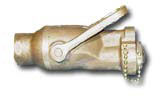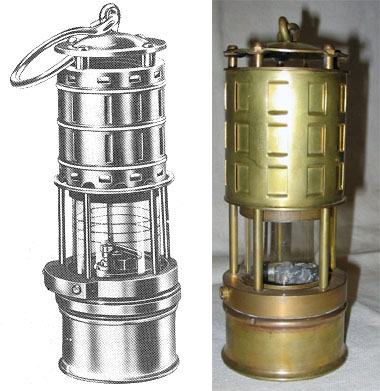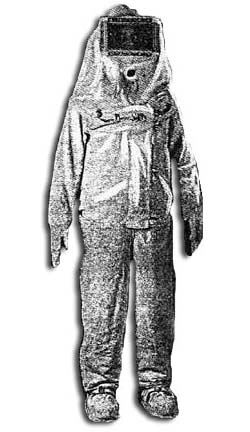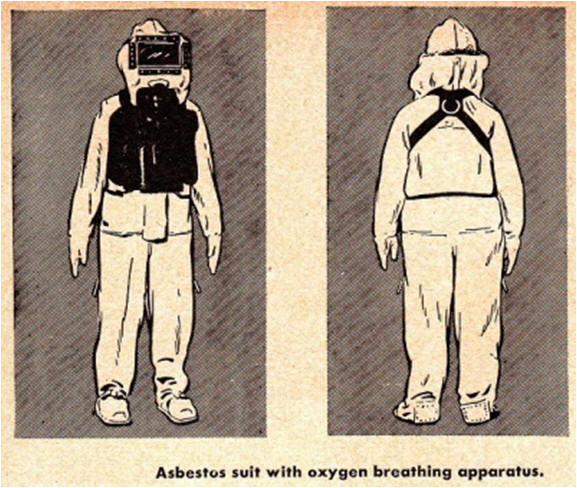| A significant improvement in
firefighting personnel protection occurred with the
development of the asbestos suit in the 1940s. Developed
primarily to provide protection during main space fires,
many firefighting control functions could not be
conducted without the asbestos suit. It was designed for
rapid hard work functions and involvement in
firefighting where reflash was a great possibility. The
asbestos suit consisted of a coat, trousers, gloves,
boots and hood. The coat had a zippered opening that
extended from the neck down to the waist; when closed it
was covered by a 3-inch-wide flap, and each forearm had
a zipper. The trousers also had a zipper on the outside
seam. Gauntlet-type asbestos gloves were required for
handling hot objects and expended OBA canisters, which
were very hot when removed from OBAs. The Micarta
helmet-form hood, attached to the suit at the back of
the neck, protected the top of the head and lent support
to the monocular-lens vision port. An overlapping “V”
slot was provided in front of the hood apron, over the
upper part of the chest, to allow for OBA breathing
tubes. One person had to assist the firefighter in
donning the asbestos suit. A complete set of clothing
had to be worn under the suit. An OBA -- Type A, A-1,
A-2, A-3, patrol type or oxygen cylinder type, depending
on the period -- was worn over the suit. While the suit
would not burn, it did conduct heat. It was designed for
full body protection in high heat and flames exposure
for short durations only, such as passing quickly
through flames to conduct personnel rescue or to secure
a valve fueling a fire source. It was the designated
protection for ships’ firefighting personnel in major
fire emergencies and conflagrations. Rotation of
personnel was of prime consideration when wearing the
hot, cumbersome and heavy suit. Caution had to be
exercised during use; if too much water saturated the
suit, there was a chance of scalding the wearer. If the
suit got too wet due to steam development, the user had
to return to a cool location. The hull allowance list
for DC equipment provided one to two outfits, plus an
equal quantity of extra hoods, and seven to ten pairs of
asbestos gloves for each repair locker. One outfit and
one to six pairs of gloves were provided in unit
lockers. NOTE: The asbestos suit is not be confused with
anti-flash clothing, which was not intended for use in
firefighting. Anti-flash clothing provided protection
from flashes such as bomb explosions. |





